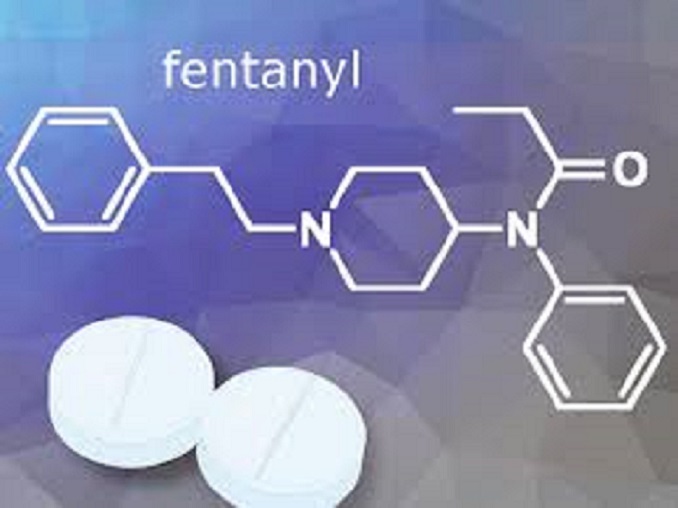
Fentanyl, a powerful synthetic opioid used for pain management, remains a crucial yet highly controlled medication in global healthcare systems in 2024. Due to its effectiveness in treating severe pain and its high potential for misuse, governments and healthcare agencies continue to regulate its procurement carefully.
This report explores Fentanyl procurement trends in 2024, including total government spending, top purchasing countries, key regions, major buyers, and funding agencies, while also highlighting new regulatory strategies and emerging challenges.
Uses of Fentanyl
Fentanyl is a key medication for managing pain in controlled medical
settings. Its primary uses include:
-
Severe Pain Management – Used in cancer pain relief and post-surgical recovery.
-
Surgical Pain Relief – Administered during anesthesia for major surgeries.
-
Chronic Pain Treatment – Prescribed for opioid-tolerant patients under strict medical supervision.
-
Emergency and ICU Care – Used in trauma centers and intensive care units (ICUs) for critical pain relief.
-
Palliative Care – Essential for end-of-life care in terminal illnesses.
Total Government Procurement in 2024
Governments worldwide are carefully regulating and increasing their spending on Fentanyl procurement while strengthening controls to prevent misuse and illegal distribution.
Global Procurement Spending – $4.2 billion allocated for Fentanyl procurement in 2024, reflecting rising global demand.
Top Government Expenditures by Country:
-
United States – $1.5 billion under controlled substance programs and public healthcare, balancing medical necessity and opioid crisis response.
-
European Union – $1.1 billion collective spending across EU nations, focusing on hospital pain management and palliative care.
-
China – $750 million in government procurement, with strict regulatory controls on distribution.
-
India – $500 million for public health initiatives and pain management in cancer treatment.
-
Latin America & Africa – $350 million in government-funded procurement, improving access to essential pain relief medications.
Top Country Buyers
Leading government purchasers of Fentanyl in 2024 include:
-
United States – Strong regulations control medical use, but demand remains high for surgical, palliative, and emergency pain management.
-
China – Government healthcare systems ensure strictly regulated hospital use.
-
India – Expanding access to opioid pain relief in cancer care facilities and public hospitals.
-
Germany, France, and the United Kingdom – Centralized healthcare systems regulate and oversee procurement for safe medical use.
Top Regions for Procurement
The demand for Fentanyl procurement is shaped by regional healthcare needs and regulatory environments:
-
North America – Largest market, driven by advanced pain management treatments and ongoing opioid crisis responses.
-
Europe – Demand fueled by centralized procurement, strict opioid regulations, and palliative care programs.
-
Asia-Pacific – Governments increasing control and monitoring to prevent misuse while ensuring medical availability.
-
Latin America & Africa – Expanding pain management programs, supported by international aid initiatives.
Top Buyers and Procuring Authorities
Several organizations oversee Fentanyl procurement to balance accessibility for medical use and risk mitigation:
-
World Health Organization (WHO) – Supports controlled procurement for medical use while addressing opioid safety.
-
U.S. Drug Enforcement Administration (DEA) & FDA – Regulate and monitor procurement and prevent illegal diversion.
-
European Medicines Agency (EMA) – Ensures compliance and procurement regulations across EU nations.
-
National Health Ministries – Manage country-specific purchases, distribution, and prescription oversight.
-
Military Healthcare Systems – Many countries procure Fentanyl for battlefield and trauma care.
Top Funding Agencies
Global organizations support and regulate Fentanyl procurement to ensure safe and effective pain management:
-
World Bank – Provides funding for essential pain management programs in developing countries.
-
Global Fund for Palliative Care & Pain Relief – Advocates for responsible opioid accessibility under strict supervision.
-
Bill & Melinda Gates Foundation – Invests in opioid accessibility while promoting responsible pain management initiatives.
-
United Nations Office on Drugs and Crime (UNODC) – Works on safe procurement, opioid regulation, and controlled distribution.
-
Gavi, the Vaccine Alliance – Supports global healthcare programs, including pain management solutions in low-resource settings.
Key Trends in Fentanyl Procurement (2024)
1. Stricter Global Regulations on Opioid Procurement
Governments are implementing enhanced prescription monitoring systems and strict procurement guidelines to prevent overuse and diversion into illegal markets.
2. Increased Investment in Safer Opioid Alternatives
There is a growing demand for alternative pain relief options, such as non-opioid analgesics and opioid-sparing medications.
3. AI & Blockchain for Supply Chain Security
Countries are using AI-driven monitoring systems and blockchain tracking to enhance transparency and prevent illegal opioid trade.
4. Expansion of Hospital-Based Palliative Care Programs
More governments and funding agencies are supporting palliative care to ensure responsible opioid distribution in terminally ill patients.
5. Ongoing Efforts to Combat the Opioid Crisis
The United States, Canada, and Europe continue to balance Fentanyl’s medical necessity with extensive addiction prevention programs and public health campaigns.
Conclusion
Fentanyl procurement in 2024 highlights its critical role in pain management, but also emphasizes the need for strict regulation to prevent misuse and illicit trafficking. Governments and funding agencies are working to balance accessibility for medical use while strengthening safeguards against opioid abuse.
With global spending surpassing $4.2 billion, continued oversight, policy reforms, and innovative tracking systems will be essential in ensuring safe, effective, and controlled opioid use worldwide.
#FentanylProcurement #OpioidRegulations #PainManagement #HealthcareTrends #MedicalOpioids #GlobalHealth #Globaltenders #PharmaceuticalProcurement #ControlledSubstances #PublicHealth #HospitalCare #PalliativeCare #PainRelief #OpioidCrisis #DrugSafety #HealthcareFunding #WHO #FDA #DEA #UNODC #MedicalInnovation #PharmaSupplyChain








